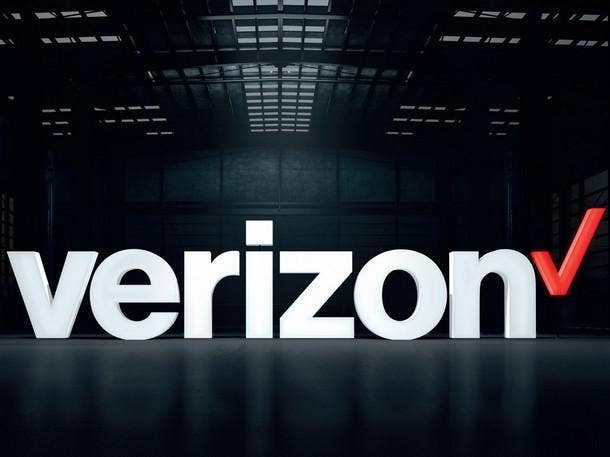Verizon’s Wireless Strength Braces Carrier Against COVID-19 Impact
Verizon wireless subscriber growth in the second quarter helped to offset declines in enterprise and SMB sales as the carrier battled the effects of the COVID-19 pandemic, Verizon CEO Hans Vestberg said Friday.

Customers have been counting on the Verizon network to stay connected during the unprecedented, global COVID-19 pandemic. Those subscribers anchored the carrier, despite the large drop-off in demand for wireless hardware during the second quarter, according to Verizon CEO Hans Vestberg.
“We are in unprecedented times with multiple crises and a business we have to run happening at the same time,” Vestberg told investors during the carrier‘s fiscal second-quarter 2020 conference call Friday. But the carrier is actively looking at the opportunities created by the pandemic and resulting economic downturn to come out even stronger, he said.
Verizon‘s strategy that it put in place for growth last year hasn’t changed. Rather, it has been reconfirmed to be the right path as the company focuses on the network, nationwide 5G and strategic services, such as 5G mobile edge compute, Vestberg said.
[Related: Verizon, Microsoft Launch Joint Platform For IoT Application Development]
Basking Ridge, N.J.-based Verizon gained 352,000 retail postpaid net additions during the second quarter—up from 245,000 a year ago—including 173,000 phone net additions and 287,000 postpaid smartphone net additions. The carrier said that 280,000 retail postpaid net additions and 76,000 phone net additions came from the Verizon Business unit.
Wireless equipment revenue, however, continued to feel the effects of COVID-19, falling 18.4 percent during the quarter as the pandemic shuttered many retail stores and customer roaming activity declined.
Total operating revenue for Verizon Business, which includes the company’s Global Enterprise Solutions, small and midsize business, public sector and wholesale businesses, dipped 3.7 percent to revenue of $7.48 billion during the second quarter of 2020 compared with $7.76 billion in the year-ago period. The carrier attributed the results to declining legacy technologies.
Global Enterprise revenue continued to decline, dropping 3.1 percent to $2.59 billion in revenue in second-quarter 2020 compared wtih $2.67 billion in the second quarter of 2019. SMB revenue, which has been on a growth trajectory for the past several quarters, dropped 6.6 percent during the quarter to $2.60 billion from $2.79 billion in the year-ago period, due to impacts from the pandemic. Public sector, however, grew 2.1 percent to $1.52 billion during the quarter compared with $1.49 billion last year. Wholesale revenue continued to slide, falling 6 percent to $769 million in the second quarter of 2020 from $818 million in second-quarter 2019.
“Reliable and secure connectivity has never been more critical as companies continue to adapt to new ways of supporting their employees and driving their businesses forward. … Our business team responded to the challenges of COVID and met the surge in demand for connectivity and devices, particularly from public sector and enterprise clients,” said Matt Ellis, Verizon‘s executive vice president and CFO. Verizon saw ”strong demand” from global enterprise customers for advanced communications services during the pandemic, he added.
Similar to the first quarter of the year, the Verizon Media segment was the hardest bit by COVID-19. Total Verizon Media revenue was $1.7 billion, down 24.5 percent year over year, which the carrier said was driven by the impact of coronavirus. The Verizon Media business, which used be called Oath and contains its AOL and Yahoo properties, saw increased levels of customer engagement on its platforms due to a Coronavirus Hub that Verizon created in the first quarter to keep customers informed, but advertising rates have continued to decline in the current environment, Verizon said.
Since 2019, Verizon has been working through companywide business and executive team restructuring and its Voluntary Separation program, which included early retirement buyout deals to thousands of its employees in an effort to achieve $10 billion in cumulative cash savings by 2021. Ellis said that the carrier has so far realized $7.2 billion in savings and is on track to hit its goal by the end of next year.
For the second quarter of the year, which ended June 30, Verizon reported operating revenue of $30.46 billion, down 5.1 percent from $32.07 billion in second-quarter 2019. Verizon attributed the decline to wireless growth being offset by a sharp reduction in equipment revenue due to retail stores closing during the coronavirus outbreak. The carrier‘s net income rose 18.8 percent in the quarter to $4.83 billion, up from $4.07 billion during the same period last year. Verizon reported diluted earnings per share of $1.13 cents, up 18.9 percent compared with diluted earnings per share of 95 cents during second-quarter 2020. Verizon said COVID-19 impacted its earnings by about 14 cents, due to lower ad revenue and declines in wireless sales.
Verizon Business in April unveiled plans to buy Blue Jeans Networks for its enterprise-focused video and event platform.